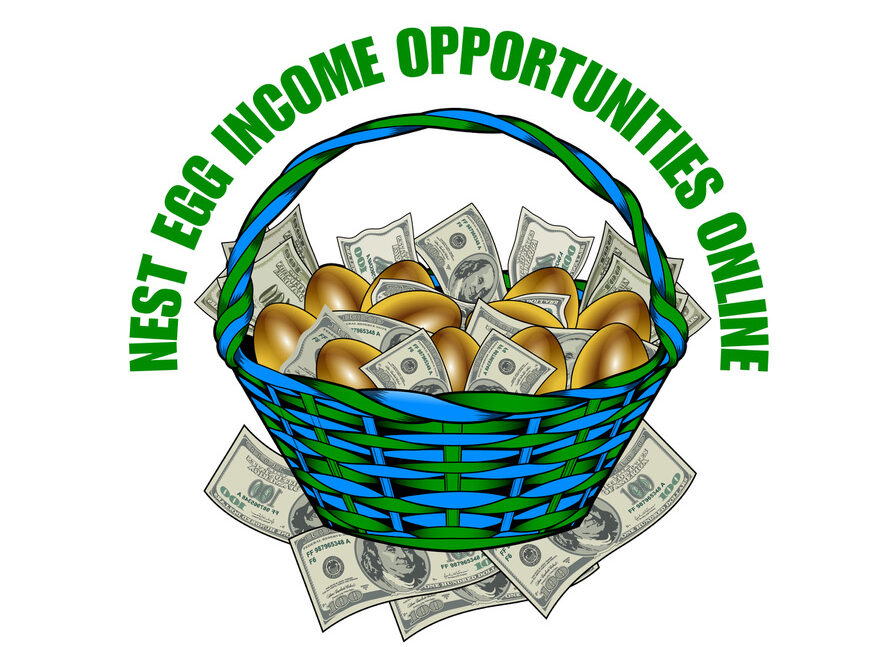I’m going to break down what dividend stocks are and how they work. To kick things off, dividend stocks represent shares of a company that pay dividends. Dividends are the company’s earnings distributed to shareholders, often each quarter. These payments can be a sign of a company’s good health and consistent performance.
You might be wondering how dividends are paid out. Generally, a company’s board of directors approves the payout, and then money is distributed to shareholders. That extra cash can be a source of regular income, or you might choose to reinvest it through what’s known as a Dividend Reinvestment Plan (DRIP), boosting your holdings without additional investment.

It’s also critical to look at a company’s dividend history and potential for future growth. What you’re after is a company that not only pays dividends consistently but has the potential to increase them over time. This is a hallmark of what many investors call ‘dividend aristocrats’ or ‘dividend kings,’ companies with a long track record of increasing dividends each year.
Now that you’ve got a grip on the basics of dividend stocks, you’re probably curious about when to jump in to get those dividend payments. That’s exactly what I’m going to help you with next.
Timing Your Investment: The Ex-Dividend Date and You
Understanding the ex-dividend date is crucial in the world of dividend investing. It’s the cut-off date set by a company after which new buyers of the stock won’t receive the next scheduled dividend. If you want to cash in on the upcoming payout, you’ll need to purchase the stock before this date.
Next, we have the record date, which follows the ex-dividend date. This is when the company takes a snapshot of their shareholders’ list to determine who is eligible for dividends. Be sure you’re on that list if you’re eyeing dividends. The payment date comes a bit later, and it’s exactly what it sounds like: the day shareholders receive their dividends.
So, how long do you have to hold a stock to get the dividend? You just need to be the owner on the day before the ex-dividend date. Yet don’t rush to sell immediately after; you’ll want to hang onto the stock until at least the ex-dividend date itself.
Developing strategies for purchasing stocks in light of dividend dates might sound complex, but I’m here to help you with it. You can optimize your stock purchases to maximize your dividend income while keeping an eye on overall portfolio performance.
Weighing the Pros and Cons: Are Dividend Stocks Right for You?
 Here’s the deal with dividend stocks: they’re like pieces in a financial puzzle. They can be excellent for generating income, but they’re not a one-size-fits-all solution. Let’s kick things off with the pros. Dividend stocks often represent companies that are well-established and financially stable, potentially providing a steady stream of income. They also offer a passive income source and could be a safety net during volatile markets, as they tend to be less susceptible to market fluctuations.
Here’s the deal with dividend stocks: they’re like pieces in a financial puzzle. They can be excellent for generating income, but they’re not a one-size-fits-all solution. Let’s kick things off with the pros. Dividend stocks often represent companies that are well-established and financially stable, potentially providing a steady stream of income. They also offer a passive income source and could be a safety net during volatile markets, as they tend to be less susceptible to market fluctuations.
But I won’t sugarcoat it. Dividend stocks have their downsides, too. For example, because these companies return a portion of their profits to shareholders, they may have less capital to reinvest for growth. Plus, dividends are taxed, which may affect your overall returns, especially if you’re in a high tax bracket.
I also want you to consider the opportunity cost. Pouring all your money into dividend stocks could mean missing out on the potential growth of non-dividend paying stocks, which often reinvest their earnings to fuel their own expansion. So what does this mean for you? It means you need a balance. You have to assess both your appetite for risk and your financial aspirations.
Let me put it straight: if your goal is immediate income, particularly if you’re nearing retirement, those dividends can be appealing. But if you’re still building your nest egg and can afford to ride the waves of the market, growth stocks may be more your style.
In the next section, we’re going to shift gears and take a closer look at retirement. Specifically, we’ll explore if and how dividend stocks should form part of your strategy as you plan for those leisure years. It’s not just about having assets, it’s about having the right kind of assets that align with your retirement objectives.
Planning for Golden Years: Do Dividend Stocks Belong in Retirement Portfolios?
If you’re mapping out your financial landscape for retirement, dividend stocks might be one of the paths you’re considering. It’s a tactic that can provide a steady stream of income when you bid farewell to your day job. Stability is typically the name of the game when it comes to retirement investments and dividend stocks often fit the bill.
 That doesn’t mean you should rush into dividend stocks without a second thought. Remember, your retirement portfolio should align with your long-term financial goals and risk tolerance. It’s about finding that sweet spot between purchasing power preservation and ensuring your nest egg keeps growing.
That doesn’t mean you should rush into dividend stocks without a second thought. Remember, your retirement portfolio should align with your long-term financial goals and risk tolerance. It’s about finding that sweet spot between purchasing power preservation and ensuring your nest egg keeps growing.
Now, adding dividend stocks doesn’t mean you’re forgoing growth. Many dividend-paying companies are known for their long-term viability and can be an excellent source of potential capital appreciation. Blend them with other investments to create a diversified portfolio that’s geared for both growth and income.
5 Dividend Stocks For 2024
So, let’s spotlight some promising contenders for 2024. After diving deep into market trends, corporate earning reports, and prospects, here are five top dividend stocks that resonate with me in terms of stability and growth potential:

In discussing potential stocks for dividend reinvestment, it’s essential to clarify that I am not a financial advisor. Investing in stocks involves risks, and individuals should conduct thorough research or consult with a qualified professional before making any investment decisions. The following list is purely from a personal perspective and is gathered from sources I Trust and utilize. What we provide should not be considered as financial advice.
- Johnson & Johnson (JNJ): Johnson & Johnson has a remarkable track record of consistently increasing its dividends for 40-plus years. With a dividend yield of 2.95%, it surpasses the S&P 500 average. Given its robust free cash flow generation, the company is well-positioned to continue rewarding shareholders.
- AbbVie (ABBV): AbbVie, despite facing challenges with patent expirations for its blockbuster drug Humira, has demonstrated resilience through diversification and the development of new drugs like Rinvoq and Skyrizi. With a dividend yield of 3.80%, AbbVie remains committed to dividend growth, making it an intriguing option for dividend investors.
- Coca-Cola (KO): Who doesn’t know them? Coca-Cola’s status as a Dividend provider speaks volumes about its commitment to rewarding shareholders. With a dividend yield of 3.06%, backed by a sustainable cash dividend payout ratio, Coca-Cola presents an attractive opportunity for dividend reinvestment.
- Abbott Laboratories (ABT): Abbott Laboratories, another Dividend Provider, boasts a long history of dividend growth. With a dividend yield of 1.93%, the company’s solid free cash flow supports its ability to sustain dividend increases over time, making it a compelling choice for dividend-focused investors.
- Medtronic (MDT): Medtronic, a leading medical device company, is undergoing a transition aimed at driving growth. With a commitment to returning a significant portion of free cash flow to shareholders, evidenced by its dividend and share repurchase programs, Medtronic offers potential for both capital appreciation and dividend growth.
Again, it’s crucial for investors to conduct their own due diligence and consider their individual financial circumstances before investing in any stocks.
To wrap it up, dividend stocks might not just be a good play; they could be your financial MVPs in the world of retirement planning. They can serve as a source of predictable income and, if chosen wisely, contribute to the growth of your retirement savings. Just don’t focus too much on perfection and remember to review your choices periodically. The stock you choose is, after all, your ticket to a comfortable retirement. Make it count.


I have never-never understood how stocks work, what I do know however is that investing in stocks can give a great return on the investement which I think is great business when it comes to investing. Thanks so much for the information that you have provided for persons like myself which can help greatly.
You are welcome Norman, we do have some links placed on our website to some reputable organizations that give very professional and comprehensive information on stock and share investing.Happy investing,John
Hi, great choices here for dividend stocks. Coca cola is my favorite. That stock has exploded over the last couple of years. I also like suncor, I managed to buy it when it was at 15 ( At 45 now) and the dividends have been lovely. Anyway I am going to check these out some more. Have a good one.
Dear Jake,
Thank you for your comment and I’m glad you found the choices in the “5 Best Dividend Stocks 2024” blog post appealing, particularly Coca-Cola. It’s indeed a stalwart in the dividend investing world with its consistent performance.
Your experience with Suncor is impressive, managing to get in at such a favourable price point. It’s a testament to the rewards of investing in quality dividend-paying stocks early on. The steady rise in its stock value alongside those lovely dividends must be a satisfying combination.
I couldn’t agree more about the importance of considering dividend stocks as part of a long-term investment strategy. They not only offer regular income but also have the potential for capital appreciation over time.
Building a nest egg through dividend stock investing is a prudent approach to securing your financial future. By reinvesting dividends and staying committed to quality companies, investors can harness the power of compounding and see their nest egg grow substantially over the years.
I encourage you to delve deeper into the potential of these dividend stocks and consider how they might fit into your long-term investment goals. Remember, patience and discipline are key when it comes to building wealth through dividends and of course, don’t forget to get that professional advice.
Best of luck with your further research, and may your investment journey be prosperous.
Warm regards,